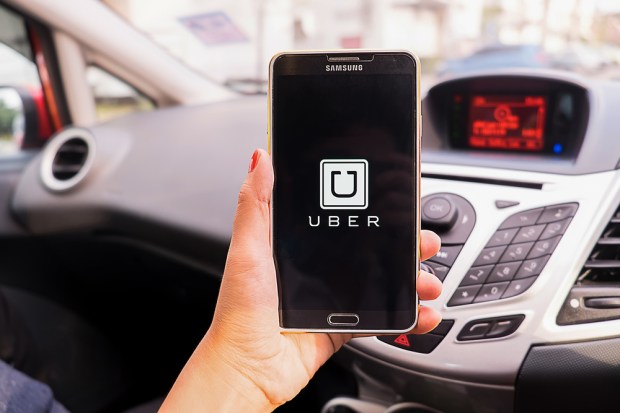Uber’s Tipping Point

Has Uber reached its tipping point?
Or, more appropriately, is it tipping the future upon which Uber’s business might hinge?
At the crux of this discussion is last week’s settlement brought about by litigation over the status of Uber drivers based on the court’s interpretation of existing labor laws. Uber drivers would like to be classified as employees, instead of the “ride-sharing, gig-economy-driven, work when I want to” employees they are now.
Uber entered into a $100M settlement in CA and MA which will allocate those funds to drivers in those states. Uber obviously did that because they thought that not settling would deliver a worse outcome. Unfortunately, there’s nothing in the settlement that would prevent that worse outcome from happening down the road.
As part of the settlement, Uber won’t be required to consider its drivers as employees. There is a “but,” however, which is where tipping comes into play.
Part of the drivers’ grievances are that they were not getting tips. While there is a default setting on Uber’s app for tips, many consumers were unaware of that option. Part of the settlement is that, now, however, drivers can ask passengers for tips (in cash, of course) and hang signs in their cars stating that the fares do not include tips.
A not-so-obvious hint that they expect one at the end of the ride.
This seemingly ignores the fact that, at least for Uber black car and SUV services, fares are more (sometimes considerably more) than the traditional taxi fare. Drivers are not complaining about the fact that they are paid a percentage of those higher fares. In some cities like Boston, there is a $15 minimum – so an $8 or $9 taxi ride ends up being 40 percent more.
A “surcharge” if you will that Uber passengers gladly pay in exchange for the predictability of the service and the professionalism of the drivers and the cars.
And …
The ability to hop out of the car without digging into a jacket or a briefcase or a pocket or a handbag for a credit card — or a couple of bucks for a tip. The whole concept of making payments invisible and removing friction is the concept upon which Uber and a thousand payments ideas and apps were born.
Now, being asked directly or feeling pressured to give a tip (or be given a bad rating because you don’t – and run the risk of being canceled when drivers see that a passenger is one not inclined to do tips) puts friction back into the experience.
Of course, a passenger can opt to include a tip in the app – putting in a little sliding scale that adds a tip is something a lot of apps do. But applying the tip typically happens at the end of the ride depending on the service received. Being forced to add a tip at the end of ride puts an end to the Uber experience – hopping out of the car and being on her way — for the passenger.
Friction.
Then, of course, there’s the issue of surge pricing. Surge pricing is put into effect when it is anticipated that the demand for drivers exceeds the supply of drivers – e.g. rain, snow, etc. Can you imagine the discussions taking place now around the war room tables at Uber HQ about how to calculate surge pricing and tips without making a $15 taxi ride $40?
Even more friction.
Uber’s original premise was to disrupt the taxi industry by offering a frictionless alternative to hailing a cab, in essence, offering a black-car experience, on demand, for those who wanted it and were willing to pay for it.
No longer would riders have to schedule a professional ride in advance or take their chances on the street hailing a cab, and then getting into one that smelled like week-old sardines. The Uber app made the experience predictable, efficient, professional – and frictionless.
As I’ve told many people, Uber is the reason I ditched my Blackberry, which I swore I would never do. I was tired of calling for a taxi for those 7 AM shuttle flights to NY and having the cab show up about 40 percent of the time.
Now, without sounding overly dramatic, that’s all at risk. Having drivers as employees changes Uber’s model significantly. Today, they are a platform that matches drivers with supply to riders with demand. Drivers as employees turns Uber into the regulated business that it entered the world to disrupt.
And, regulators and litigators, smelling blood in the water, are circling the wagons all over the world.
On some level, it’s not surprising.
Uber went head first into the regulated buzzsaw called the taxi monopoly. They asked for forgiveness instead of permission in the markets they entered – since, had they asked for permission, they’d have been shut out. But consumers – the market – embraced them, loved the model and helped them grow.
The taxi business has suffered. Medallion prices have plummeted everywhere Uber has come into town. In Boston and Chicago, to take two examples, not only have prices dropped by 40 percent and 25 percent, respectively — but there also isn’t any demand for them. That’s because consumers have spoken – and what they say is that they like the Uber experience better.
So, will introducing the notion of tips, as brought about by the CA and MA settlements, become the tipping point for Uber — and every other on-demand platform that matches supply with demand?
Only time – and the lawyers — will tell.
